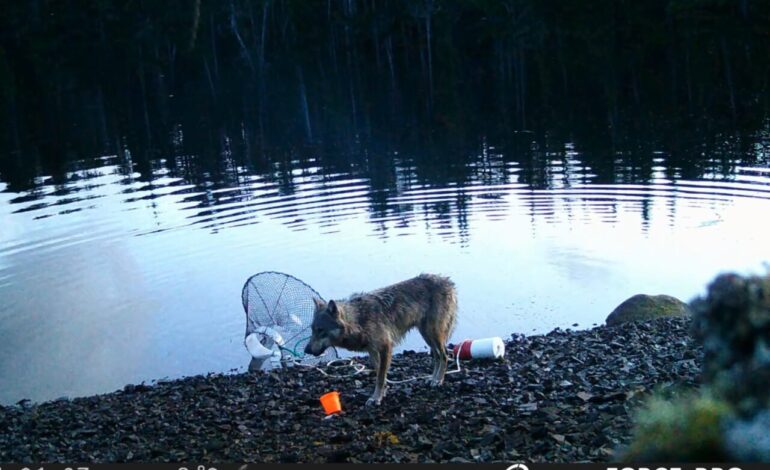Wolf Masters Crab Trap Heist on British Columbia Coast

A remarkable incident has unfolded on the coast of British Columbia, where a wolf has demonstrated unexpected intelligence by stealing bait from crab traps. Researchers from the Haíɫzaqv Nation set up remote cameras to identify the culprit behind the persistent thefts, only to capture footage of a wolf swimming with a crab trap in its mouth. This behavior has sparked interest among scientists, as it could represent one of the first documented instances of tool use by wolves.
The study detailing this behavior was published on November 17, 2023, in the journal Ecology and Evolution. The researchers observed that the wolf displayed a clear understanding of how the trap operated, suggesting a potential for complex problem-solving skills that could alter perceptions of wolf intelligence.
Unraveling the Mystery of the Crab Thief
The situation arose when the Haíɫzaqv Nation guardians began using crab traps to control an invasion of European green crabs, a species known to disrupt local ecosystems. Since the traps were installed in 2021, guardians noted that some traps were either damaged or had their bait stolen, even when submerged. This led them to suspect various animals, including bears and marine life, but the true thief turned out to be a wolf.
During the recorded incident, the wolf swiftly carried the trap’s buoy to the beach, identified the attached line, and pulled the trap partially out of the water. It then maneuvered the trap further inland and manipulated the bait cup until it opened. This entire sequence unfolded in approximately three minutes, revealing a level of cognitive ability previously unrecognized in wolves. The researchers noted that the trap was initially hidden from view, indicating the wolf’s understanding of the connection between the buoy, rope, and the bait-filled trap.
Behavioral Insights and Future Research
Preliminary findings suggest that at least two wolves are capable of this behavior, but the exact origins of their skills remain unclear. Researchers speculate that these wolves might have learned by observing the Haíɫzaqv guardians, who typically lift traps vertically from the shore. The wolves could have adapted this action, dragging the traps horizontally onto the beach instead.
The environment in which these wolves live also plays a crucial role. With minimal human presence in the area, it raises questions about whether the wolves feel secure enough to engage in such sophisticated foraging behavior without fear of repercussions. This insight could have significant implications for wildlife management and conservation strategies, particularly regarding the ethical treatment of animals perceived as intelligent.
The researchers acknowledged the need for caution in interpreting tool use as a definitive measure of intelligence. They concluded that the observed behaviors could prompt a reevaluation of negative stereotypes associated with wolves. As they continue their study, they aim to further explore the ecological dynamics and cultural significance of wolves in this region, seeking to answer the many questions raised by this intriguing incident.






